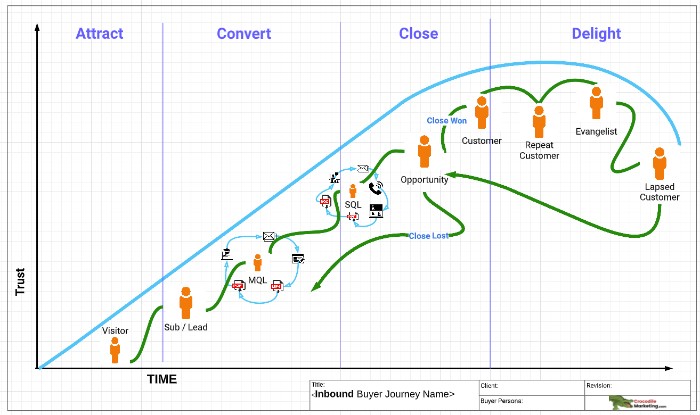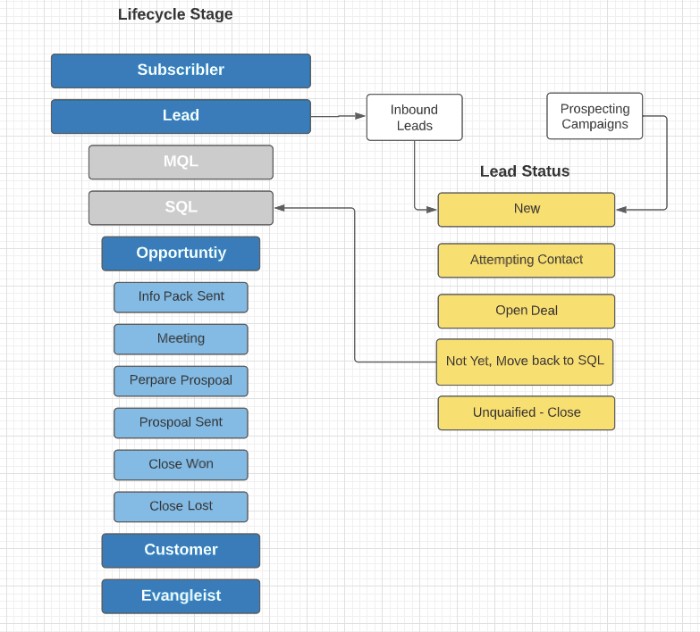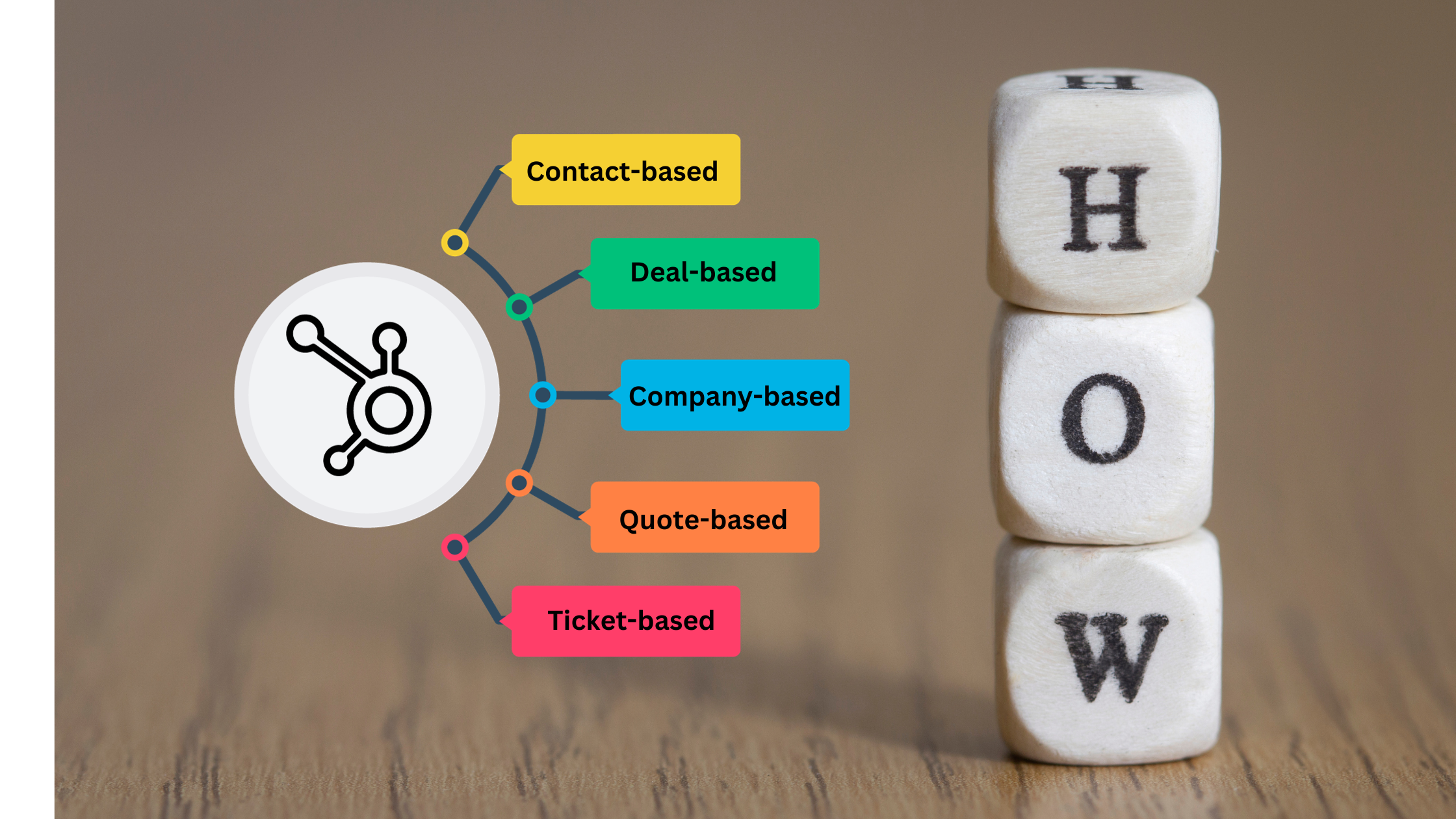HubSpot Lifecycle Stages and Lead Status: A Comprehensive Overview
Are you unsure about what the difference is between a HubSpot lead's lifecycle stage and lead status? If so, you're not alone - many people are confused by these terms. However, it's important to understand the distinction, as it can have a big impact on your marketing and sales strategies.
In this blog post, we'll give a comprehensive overview of HubSpot's lifecycle stages and lead status, explaining what they are and how they differ from each other. We'll also provide some tips on how to make the most of this information to improve your results. So if you're ready to learn more about this topic, read on!
Introduce HubSpot and its features

HubSpot is a comprehensive business platform designed to help companies of all sizes increase their sales and grow their customer base. At the centre of HubSpot lies its hub lifecycle stages, which allow businesses to track leads from initial contact through conversion.
Companies and contacts can customize each HubSpot lifecycle stage to align with their marketing and sales strategies. Additionally, lead status HubSpot helps companies to monitor the progress of each hot or cold prospect, allowing them to adjust their approach accordingly.
With the ability to design custom reports and dashboards, managers can easily keep track of how well sales and marketing teams are performing on a variety of metrics, including average close rate, number of product demos sent out, and high-value deals closed. What’s more, users gain access to an extensive library of resources covering content promotion, SEO optimization and sales insights - just some of the features that make HubSpot a valuable tool for any business.
Explain the HubSpot lifecycle stages vs lead status
Understanding lifecycle stages and lead status is essential to properly managing customer relationships and nurturing leads. A lifecycle stage essentially indicates where a lead is in their journey from being an unfamiliar visitor to a paying customer. Generally, there are four stages of a customer's journey: Awareness, Consideration, Decision, and Retention.
Within the HubSpot default, lifecycle stage field 8 levels can be changed for your needs. HubSpot's lead status helps further qualify prospects as they progress through the lifecycle stages by indicating what kind of engagement and response the lead requires.
Examples of lead statuses include Interested, Cooling off, Ready to buy, and Negotiating. Ultimately, tracking lifecycle stages and lead statuses helps you ensure leads are receiving appropriate attention and care at the right points in their journey.
In this way, you can ensure better relations with your customers, which could ultimately help increase revenue over time. By understanding lifecycle stages and lead status, you can ensure that your business has efficient processes for nurturing customers towards becoming paying customers.
What is the lifecycle stage in HubSpot?

The default lifecycle stage property helps you categorize your contacts and companies to discern where they are at regarding your marketing and sales processes. This, in turn, allows for a more seamless handoff between departments—-ensuring that no customer falls through the cracks.
- Subscriber: a contact who has opted in to hear more from you by signing up for your blog or newsletter.
- Lead: a contact or company that has converted on your website or through some other interaction with your organization beyond a subscription sign-up.
- Marketing Qualified Lead: a contact or company that your marketing team has qualified as ready for the sales team.
- Sales Qualified Lead: a contact or company that your sales team has qualified as a potential customer. This stage includes sub-stages that are stored in the Lead Status property.
- Opportunity: a contact or company that is associated with a deal (e.g., they're involved in a potential deal stages with your organization).
- Customer: a contact or company with at least one "closed won" deal.
- Evangelist: a customer who has advocated for your organization.
- Other: a contact or company that does not fit any of the above stages.
Can you customize HubSpot's lifecycle stages?
Yes. HubSpot has released the functionality to delete, edit and add different lifecycle stages.
To create and edit lifecycle stages for contacts and companies:
- In your HubSpot account, click the settings in the main navigation bar.
- In the left sidebar menu, navigate to Objects; then select Contacts.
- Click the Lifecycle Stage tab.
You can change the lifecycle stage to match when the record was made or what it is associated with. You can also update the lifecycle stage manually by doing the following:
- Manually update the lifecycle stage property for an individual contact or company.
- Bulk updates the lifecycle stage of your contacts or companies from an index page.
- Import a lifecycle stage column to update the lifecycle stage property for contacts or companies.
- Use the Set [contact/company] property value action in a chatflow.
- Use the Set, a property value action in a HubSpot workflow (Professional or Enterprise accounts only).
- Set the lifecycle stage within certain integrated apps that sync the lifecycle stage property, such as the HubSpot-Salesforce integration.
How should you use lifecycle stages?
Lifecycle stages are very important in understanding your customer's journey. Not only do they help you track each contact and company’s progress through your marketing, sales and service cycle, but they also provide you with actionable insights on where to focus your staff and resources.

Lifecycle stages track and managing your contacts, you can gain valuable insights into the effectiveness of your marketing and sales strategies. This will enable you to adjust your tactics as needed to optimize customer experiences and reach maximum profitability.
Overall, leveraging the lifecycle stages available in HubSpot can help you better understand your customers’ journeys, improve the performance of campaigns, and maximize ROI.
Describe how to use HubSpot to increase your sales pipeline
Utilizing HubSpot to increase your sales pipeline is simple and effective. Firstly, you can break down prospects by lifecycle stage so that they're easier to trace.
For example, a blog post may attract some leads in the Awareness lifecycle stage, who may then be nurtured and moved along the funnel until they reach a SQL or opportunity lifecycle stage. This method makes it easy to track progress and identify who needs more attention. Secondly, HubSpot gives you powerful insights into the lead status and customer preferences so that you can tailor your approach for each prospect.
What is the lead status in HubSpot?
The lead status in HubSpot is a property that indicates where a company or contact is at in the sales process. It defines whether the lead is active, qualified, or closed. The lead status can be updated manually by an administrator or automatically adjusted through automated workflows and rules.
Lead statuses are divided into different stages that reflect the customer's journey through the pipeline. These may include open, contacted, qualified, accepted, or closed. By tracking and managing lead statuses in HubSpot, you can gain valuable insights into the effectiveness of your sales process and make adjustments as needed to optimize customer experiences and maximize ROI.
Can you add a lead status in HubSpot?
Yes, you can add a lead status in HubSpot. To do so, go to the settings menu and select “Objects”, then “Contacts”. From there, click the Lead Status tab and create your own custom lead statuses that reflect the customer's journey. You can also update existing statuses or delete them.
How do you use a lead status in your sales process?
A lead status can be used to track prospects throughout the sales process and gain valuable insight into customer preferences. Lead statuses are divided into different stages that reflect the customer's journey through the sales pipeline. By tracking lead statuses in HubSpot, the sales team can make informed decisions about how best to nurture each prospect and adjust their approach as needed for maximum sales results.

The two statuses should always be included for potential prospects who are
- not yet prospects, those who fit your ideal target audience but are not ready to buy yet. These prospects generally need more time and nurturing and should be handed off to the marketing team or placed in a sales nurturing process for follow-up at a later stage.
- Unqualified are prospects who do not fit your target audience and will never buy your product or services. By using the status, the sales rep can filter out these prospects and focus on sales, while the marketing side can analyse the data to determine how to prevent these prospects from entering your marketing system.
Offer tips on how to maximize HubSpot's potential.

As a business owner or marketer, it's important to make the most of HubSpot's marketing and sales automation capabilities. With the right strategies, you can maximize your use of this platform and get the best return on your investment.
To begin with, make sure you're utilizing lifecycle stages and appropriate lead statuses throughout your funnel. Doing this will provide clarity on where leads started their journey, what they accomplished along the way, as well as where they are at in their lifecycle stage at any given moment.
Additionally, take advantage of segmentation, which allows you to track progress and gain insights into which contacts are more likely to convert. It also enables you to customize content for specific users, which can help personalize the marketing experience for them by providing content tailored to their interests.
You should also try defining measurable goals so you can monitor performance over time and recognize any potential opportunities for optimization or improvement. By keeping these helpful tips in mind, you can ensure that you're able to make the most out of HubSpot's potential.
Conclusion
HubSpot is a comprehensive platform that can help you increase sales and better understand your customer’s buying journey. It’s important to familiarise yourself with the different features and how they can be used to your advantage to help both marketing and sales teams.
We hope this article has helped give you a better understanding of HubSpot and has shown you some ways in which you can maximise its potential for increasing your sales pipeline. Are there any particular aspects of HubSpot on which you would like us to go into more detail? Contact us today, and we’d be happy to help!





